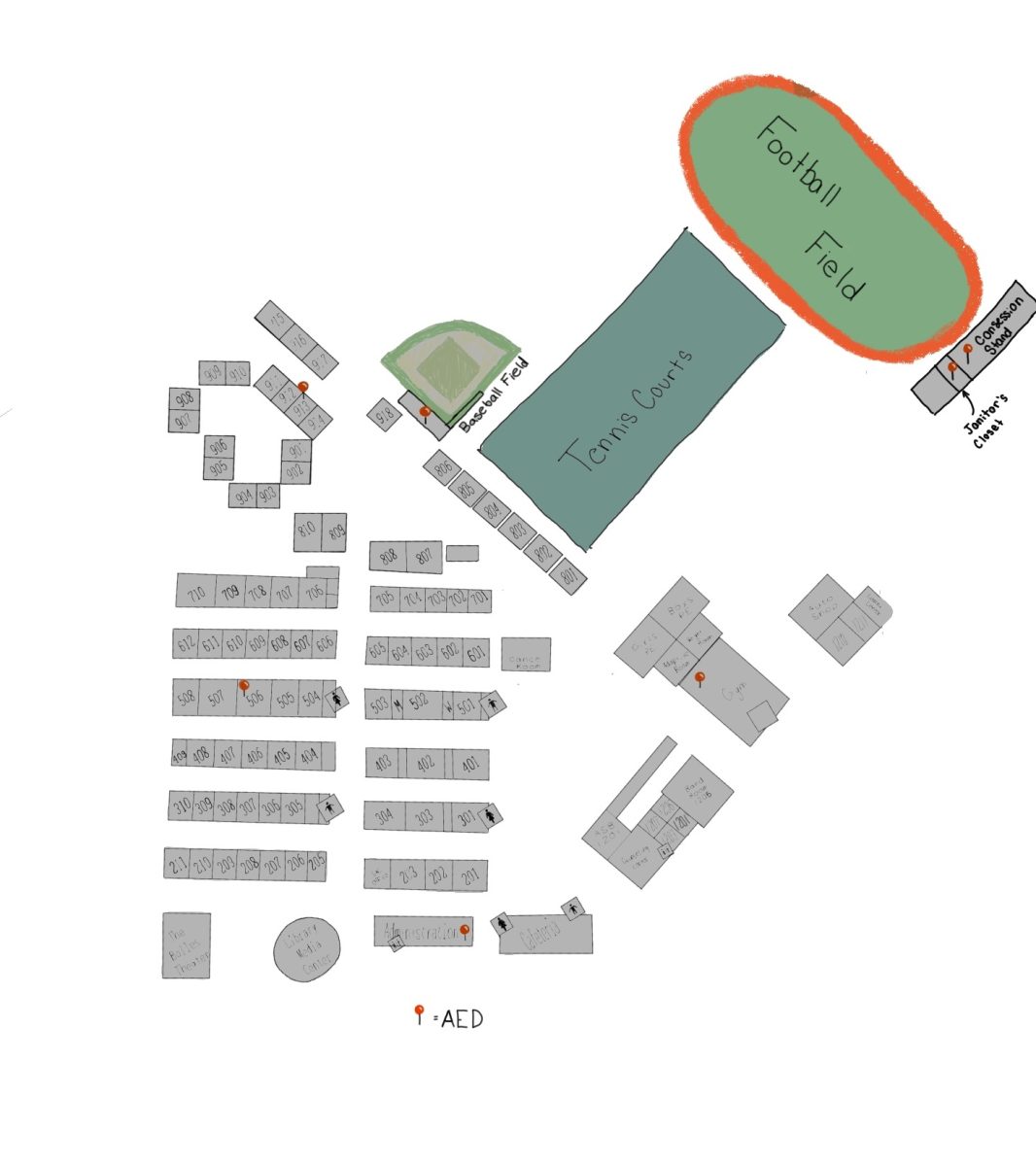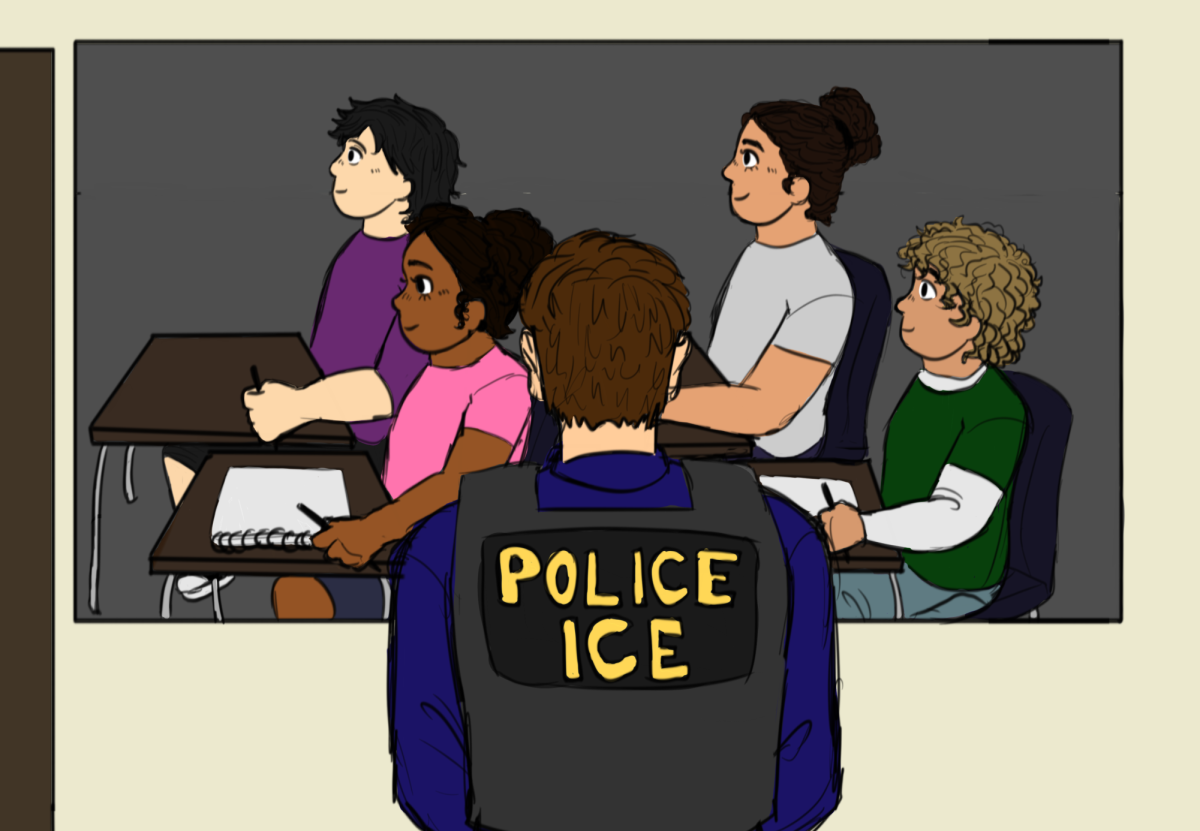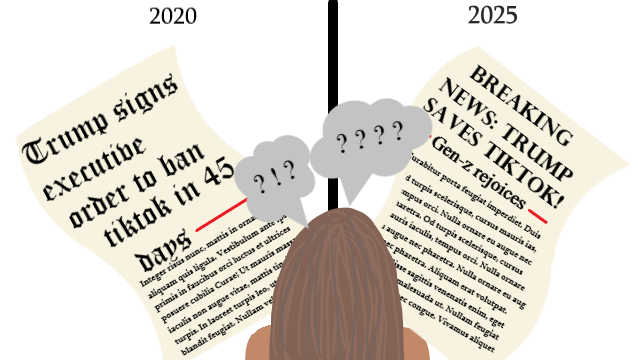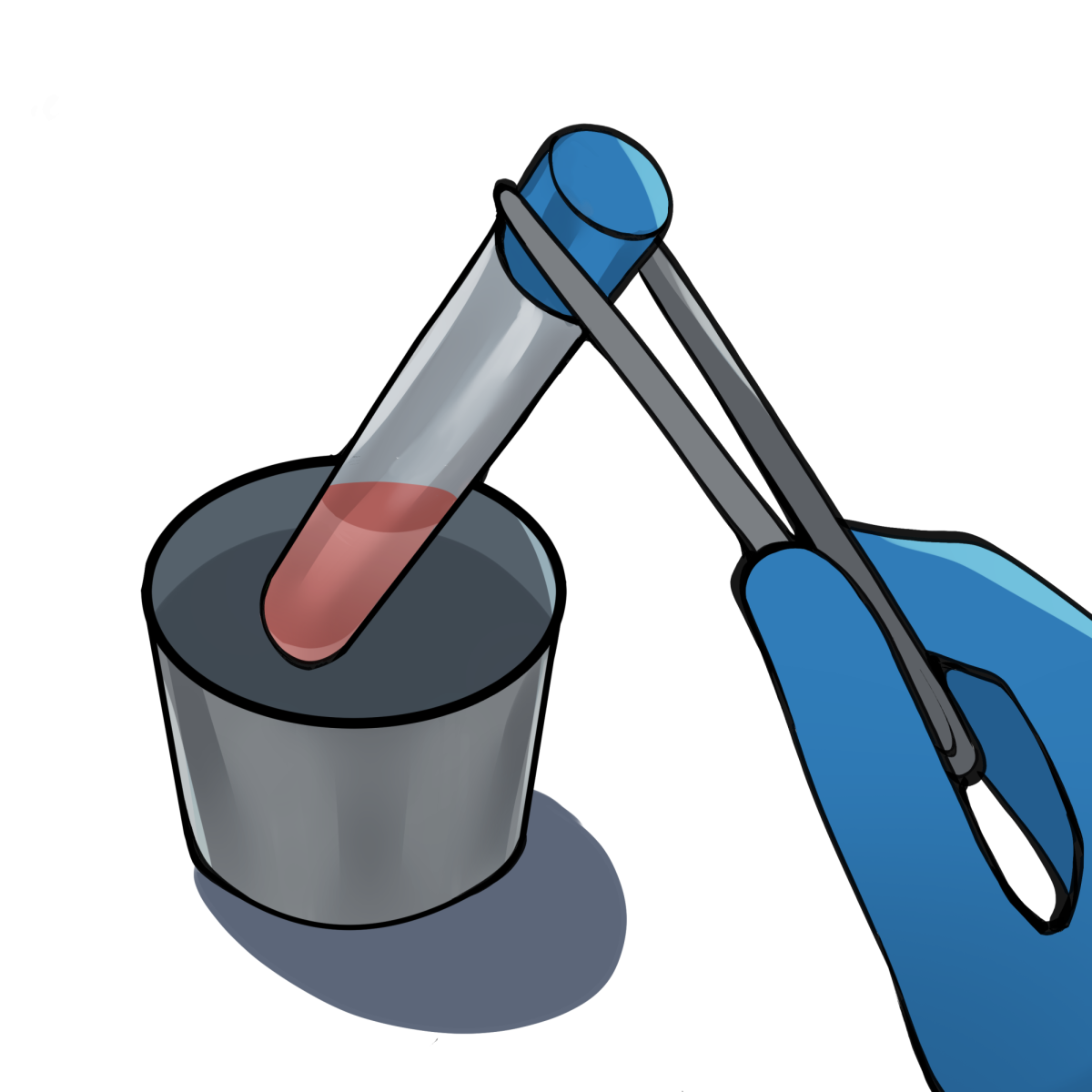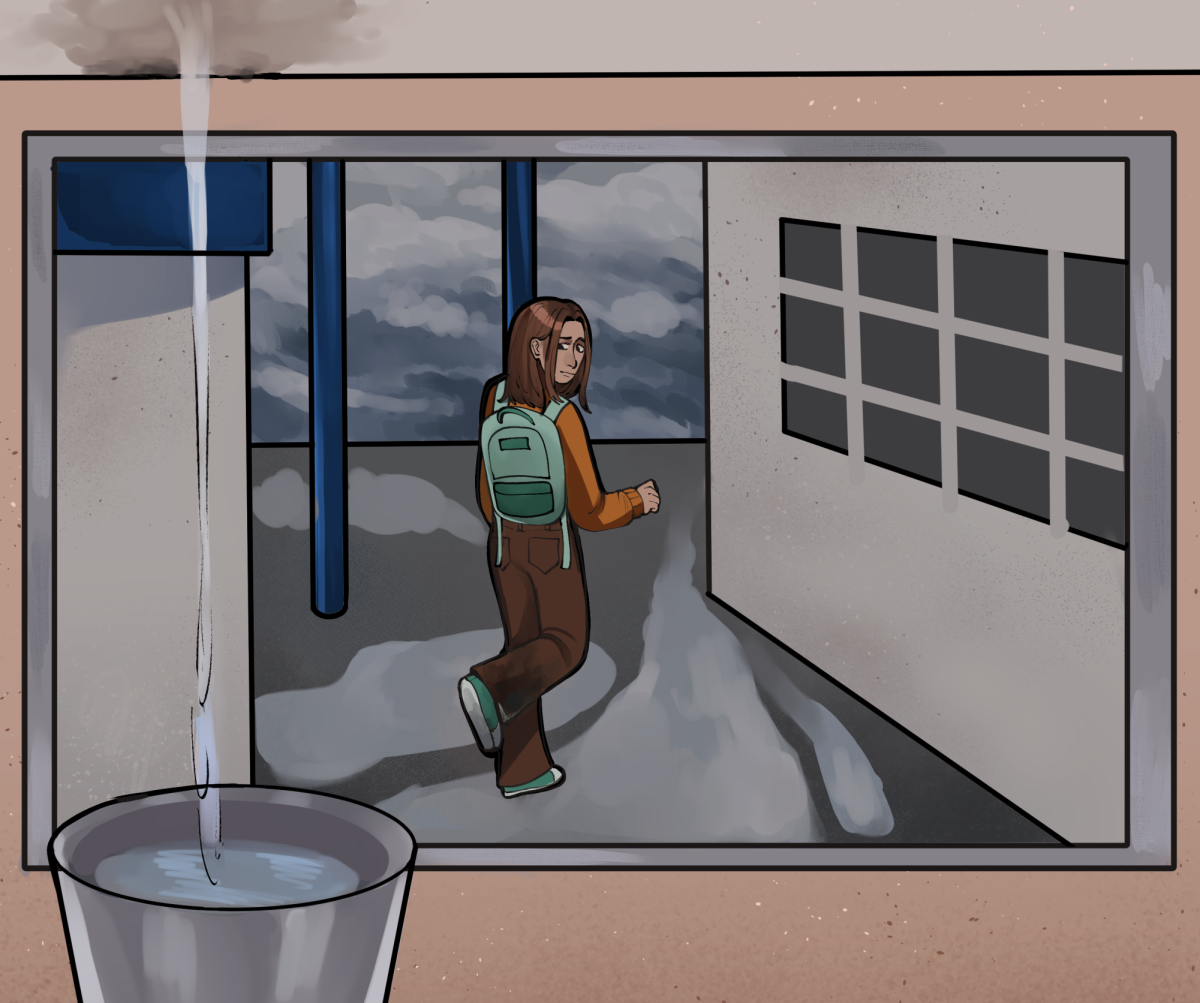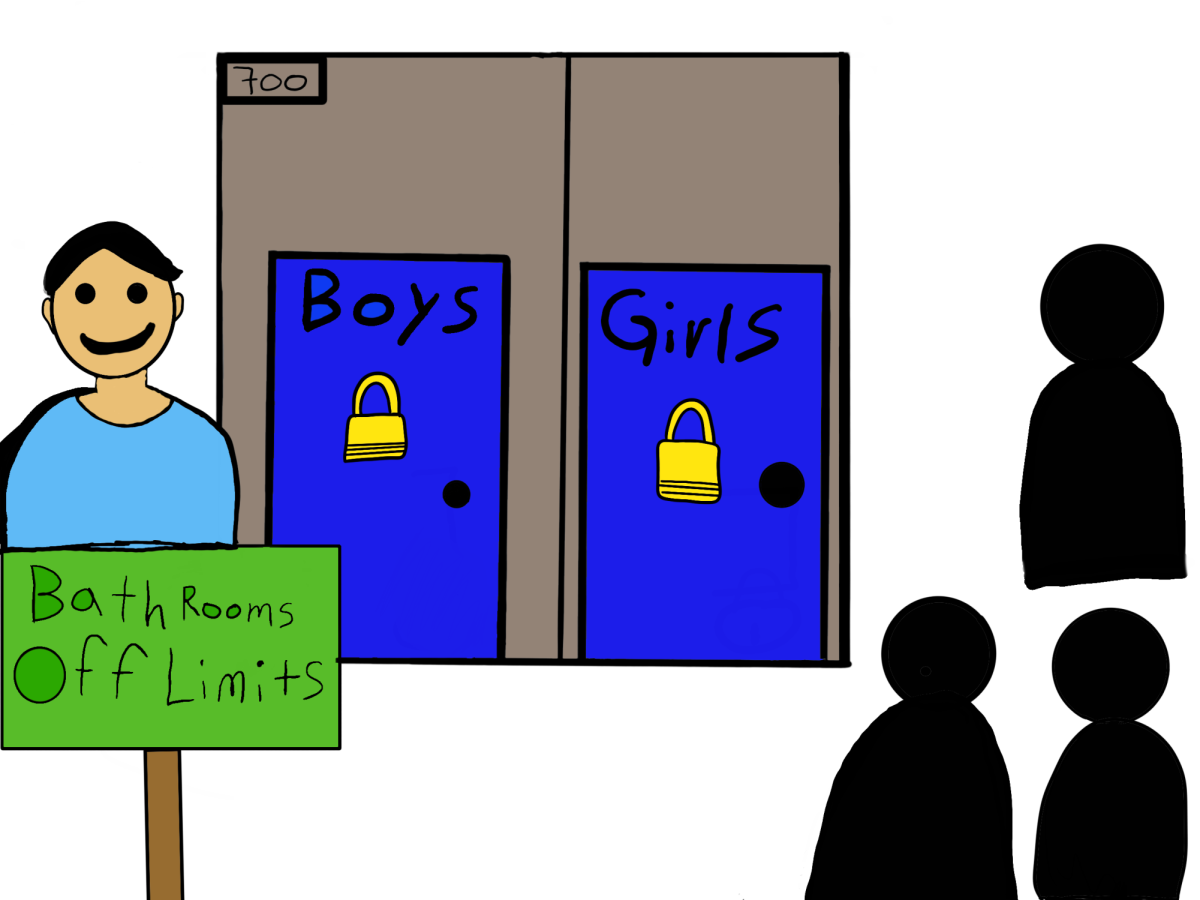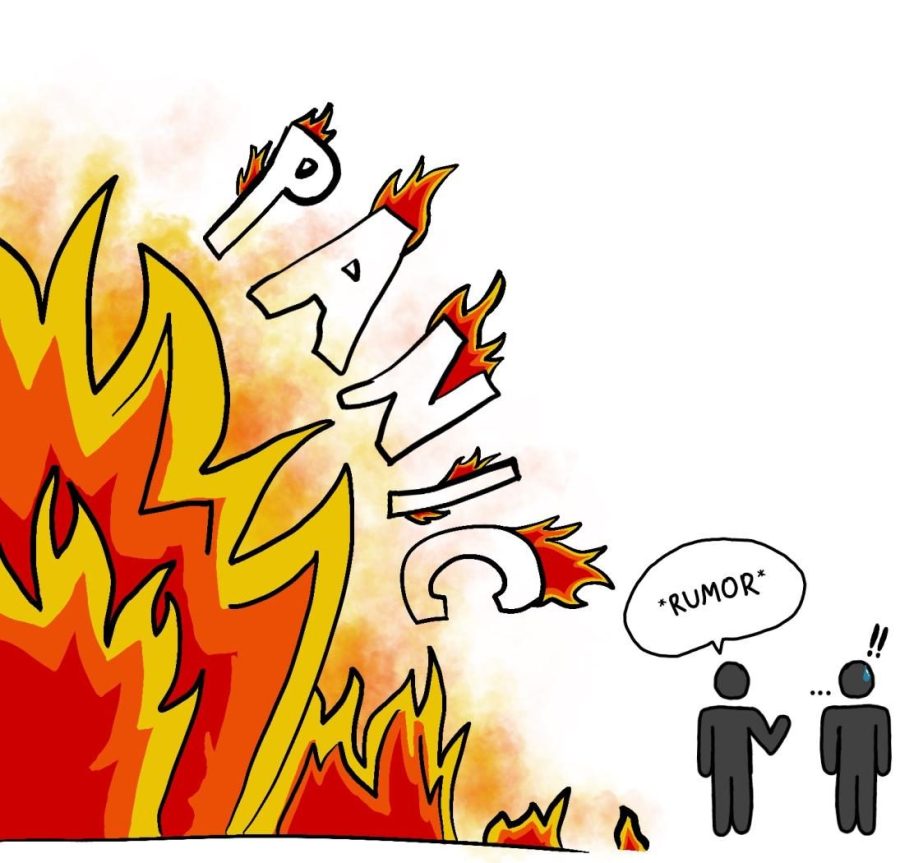Automated External Defibrillators, also known as AEDs, are used in case of an medical emergency—when a person goes into Sudden Cardiac Arrest (SCA) and their heart needs to be shocked back into rhythm to continue beating properly—needing to maintain pumping blood flow throughout the body. In split second emergencies on school campuses, students, staff and faculty need to know all current locations of AEDs each year because in case of an SCA, they know where to find the closest AED as time is crucial.
With the presence of an AED nearby on school campuses, according to School Health, a website providing health supplies and services to schools, an AED can further increase an individual’s chances of survival in a case of cardiac arrest. Having more than one AED on campus also improves the chances of saving lives.
Allocating AEDs to certain locations on a school campus aids in acquiring one as soon as possible in case of an emergency. Also, as stated by School Health, those who receive a shock from an AED within the first minute of cardiac arrest, have a 90 percent chance of living through the event. Even though they may be close by to possess and use in just a minute or two, it can be almost just as useless if the locations of AEDs are not known, putting the person at a lesser odds.
The American College of Cardiology, an organization that looks to transform cardiovascular care and improve heart health for all, also stresses that it is vital time between when first collapsing to the defibrillation. The organization states, “Survival decreases ten percent every minute until a shock is applied.” Supporting the idea that reaching an AED needs to be as quick and easy as possible to obtain in order for use.
At Bonita Vista High, (BVH) there are six total AEDs located throughout the campus. There is one in the gymnasium, concession stand in the stadium, janitor’s closet, main office, baseball/softball dugout and Sports medicine room on standby during games. However, the locations are not widely known. Which could potentially cause issues if students along with staff do not know where they are.
Finding an AED is sometimes acknowledged or not the first priority in a medical situation. However, it can create a stressful emergency if struggling to find an AED. As stated by AED.com, a website that provides emergency preparedness solutions for public access as well as products and services, “locating an AED in a highly visible and public location can make the difference between life and death.”
The placement of AEDs around a school campus should be well planned and thought out for efficiency. The School Health additionally states that being aware of AED locations is valuable in case of an emergency. The site suggests for quick access, signage for AEDs should be placed in high traffic areas, such as hallways, main entrances, gymnasiums, auditoriums, cafeterias and the nurse’s office.
Having signs and informing anyone and everyone on campus of the AED locations within the school helps to bring awareness so that anyone is prepared to run and grab one in case of an emergency. Even if the emergency does not end up requiring one it is just as important in case of an event in the future.
Bringing awareness to AED locations is important, just as learning about it over National CPR and AED awareness week. According to the American Heart Association, an organization “striving to save and improve lives”, dedicates a week in June to highlight CPR and AED awareness. The week emphasizes different information as it spreads throughout the seven days. This includes accessibility to AEDs and may be very valuable in case of an emergency.
In the Sweetwater Union High School District, all schools should have annual postings to inform students, parents and faculty of the various locations within their campus. This will help become prepared in case of an emergency that potentially requires getting an AED.

